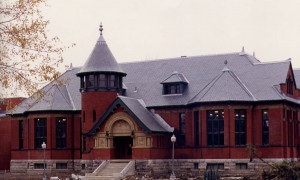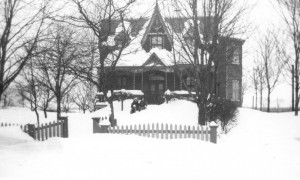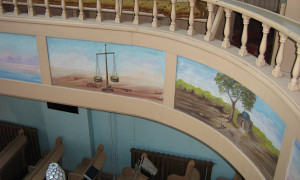Articles
Many, many years ago there lived a group of Mi’kmaq along the shores of the Bay of Chaleur, in the region of the seventh district of the Mi’kmaq Nation.
Writing in 1936, Olive Willett Smith, a Gaspé native, began her travel book Gaspé the Romantique this way: "In summer, as the thermometer hovers in the nineties and the humidity tags along, go to the Northland; to Gaspé, that eastern arm of the Province of Quebec stretching out into the Gulf of St. Lawrence, where the air is like champagne."
An informative booklet on the Mi’kmaq community of Gesgapegiag was created following a concentrated two-week effort by four teachers at the Wejgwapniag School in Gesgapegiag. Ramona Jerome, John Martin, Gertrude Martin and Roger Martin demonstrate the pride and history of Gesgapegiag in this collection of articles.
A book for young readers, Little Chief of the Gaspé is the story of eleven-year-old Jacques Cartier LeGrand and “Little Chief” which was given to one of Jacques ancestors by an Indigenous chief as a gift of friendship, passed on from father to son throughout the years. The figurine came to Jacques at a time when Jacques’ father had been lost in a storm at sea.
Art Campbell was a highly respected teacher and community member. He retired from Bishops’ in 1983 and returned to Grand Cascapedia where he would write this humorous and heart-warming makeshift dictionary, a real Gaspesian treasure. The book appeals to those lucky enough to have been born in the Gaspe, and to those “from away”.
The Gaspé, Including an Account of L'Île Percée, by John M. Clarke,examines the history, customs and geology of the region, at a time when a new road running down the south shore of the St. Lawrence River was opening the area to tourism.
John Mason Clarke was an American palaeontologist and a world authority on Devonian life and time. He was author of more than 10,000 printed pages, distributed among 450 books and papers.
The Heart of the Gaspe contains early twentieth-century sketches of the peoples and places of the Gaspé Coast, along with photos and illustrations.
The production of the book Once Upon a Time in the Gaspé was a successful intergenerational project organized by the Committee for Anglophone Social Action and funded by the Department of Canadian Heritage.
In 1668, Father François Salignac de Fénelon founded a school and a mission post for the Indians n the actual site of our City. This first mission was called “La Présentation”. Father Fénelon was from a noble family whose insignia bore an eagle. On the City of Dorval’s crest, the eagle was introduced symbolically. In fact, it represents in a heraldic fashion the Dorval airport. It is the emblem of strength, majesty, and power.
Led by the brilliant Hall of Famers Harry Trihey and Arthur Farrell, the Montreal Shamrocks, also known as the “Fighting Irish,” were an Irish Catholic hockey club that revolutionized the sport on their way to winning two Stanley Cups in 1899 and 1900. Formed out of the old Montreal Crystals Hockey Club in 1895, the Shamrocks were owned by the Shamrock Amateur Athletic Association, which also operated the legendary Shamrocks Lacrosse Club.
The City of Westmount has a population of 20,548 residents as of 2009 who reside within the 3.9 square kilometre area on the southwestern slopes of Mount Royal surrounded by the City of Montreal.
The Westmount Historical Association exists, “to obtain and classify all historical and similar material about the City of Westmount which might be available and useful,” for the understanding of the development of this city within a city. This was the mandate of the Westmount Historical Association when it was founded in 1944 and continues to guide our existence today.
When married and still living in Montreal, Mother [Mary Ann Swift Wickham] took us children to St. Lambert when ill in summer. She boarded at an inn on the riverbank kept by the Irvings and known as Irving’s Hotel. This was then a roadhouse, where farmers passing to market in the city by ferry, or ice-bridge, stopped to refresh themselves. St. Lambert air was thought to cure “summer complaint” a cause of great infant mortality in those days. The sufferer was rowed upon the river. However, the fresh milk obtainable was more likely the cause of improvement.
Macdonald College in Ste. Anne de Bellevue is remembered as a bequest of Sir William Christopher Macdonald, and it was a gift of extraordinary generosity. Not only did he perceive the need for an agricultural and teaching college, but he also acquired the land, ordered the design of the buildings, paid the costs of construction and endowed the institution. The college was only one of many gifts from possibly the most generous philanthropist in the history of our country. What do we really know about the man and his own history?
A cornerstone of Montreal’s immigrant heritage stands at the corner of Bagg and Clark streets in Montreal’s now-trendy Plateau district.
Pagination
- First page
- Previous page
- …
- 24
- 25
- 26
- 27
- 28
- 29
- 30
- 31
- 32




